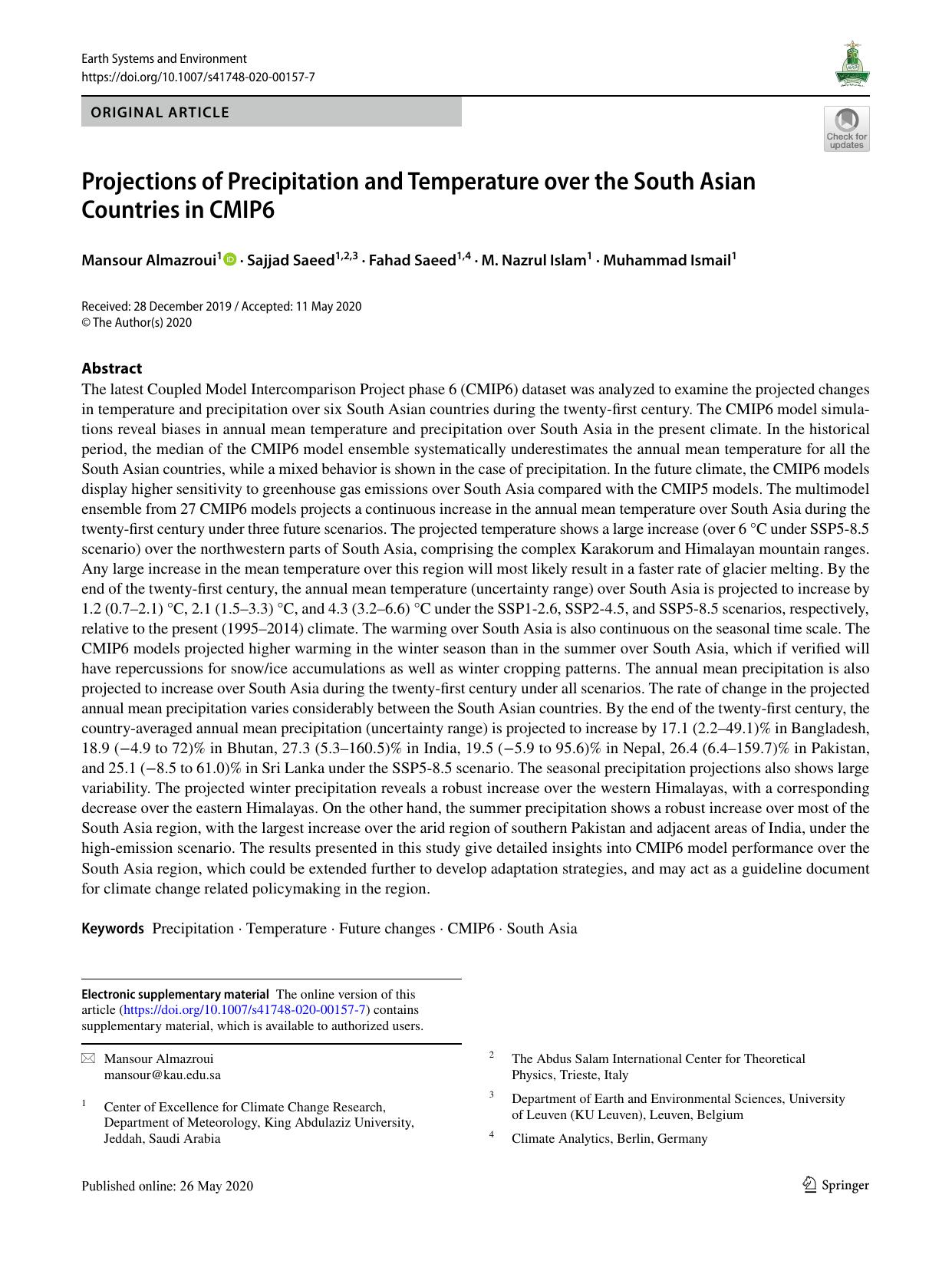
The latest Coupled Model Intercomparison Project phase 6 (CMIP6) dataset was analyzed to examine the projected changes in temperature and precipitation over six South Asian countries during the twenty-first century. The CMIP6 model simulations reveal biases in annual mean temperature and precipitation over South Asia in the present climate. In the historical period, the median of the CMIP6 model ensemble systematically underestimates the annual mean temperature for all the South Asian countries, while a mixed behavior is shown in the case of precipitation. In the future climate, the CMIP6 models display higher sensitivity to greenhouse gas emissions over South Asia compared with the CMIP5 models. The multimodel ensemble from 27 CMIP6 models projects a continuous increase in the annual mean temperature over South Asia during the twenty-first century under three future scenarios. The projected temperature shows a large increase (over 6 °C under SSP5-8.5 scenario) over the northwestern parts of South Asia, comprising the complex Karakorum and Himalayan mountain ranges. Any large increase in the mean temperature over this region will most likely result in a faster rate of glacier melting. By the end of the twenty-first century, the annual mean temperature (uncertainty range) over South Asia is projected to increase by 1.2 (0.7–2.1) °C, 2.1 (1.5–3.3) °C, and 4.3 (3.2–6.6) °C under the SSP1-2.6, SSP2-4.5, and SSP5-8.5 scenarios, respectively, relative to the present (1995–2014) climate. The warming over South Asia is also continuous on the seasonal time scale. The CMIP6 models projected higher warming in the winter season than in the summer over South Asia, which if verified will have repercussions for snow/ice accumulations as well as winter cropping patterns. The annual mean precipitation is also projected to increase over South Asia during the twenty-first century under all scenarios. The rate of change in the projected annual mean precipitation varies considerably between the South Asian countries. By the end of the twenty-first century, the country-averaged annual mean precipitation (uncertainty range) is projected to increase by 17.1 (2.2–49.1)% in Bangladesh, 18.9 (−4.9 to 72)% in Bhutan, 27.3 (5.3–160.5)% in India, 19.5 (−5.9 to 95.6)% in Nepal, 26.4 (6.4–159.7)% in Pakistan, and 25.1 (−8.5 to 61.0)% in Sri Lanka under the SSP5-8.5 scenario. The seasonal precipitation projections also shows large variability. The projected winter precipitation reveals a robust increase over the western Himalayas, with a corresponding decrease over the eastern Himalayas. On the other hand, the summer precipitation shows a robust increase over most of the South Asia region, with the largest increase over the arid region of southern Pakistan and adjacent areas of India, under the high-emission scenario. The results presented in this study give detailed insights into CMIP6 model performance over the South Asia region, which could be extended further to develop adaptation strategies, and may act as a guideline document for climate change related policymaking in the region.